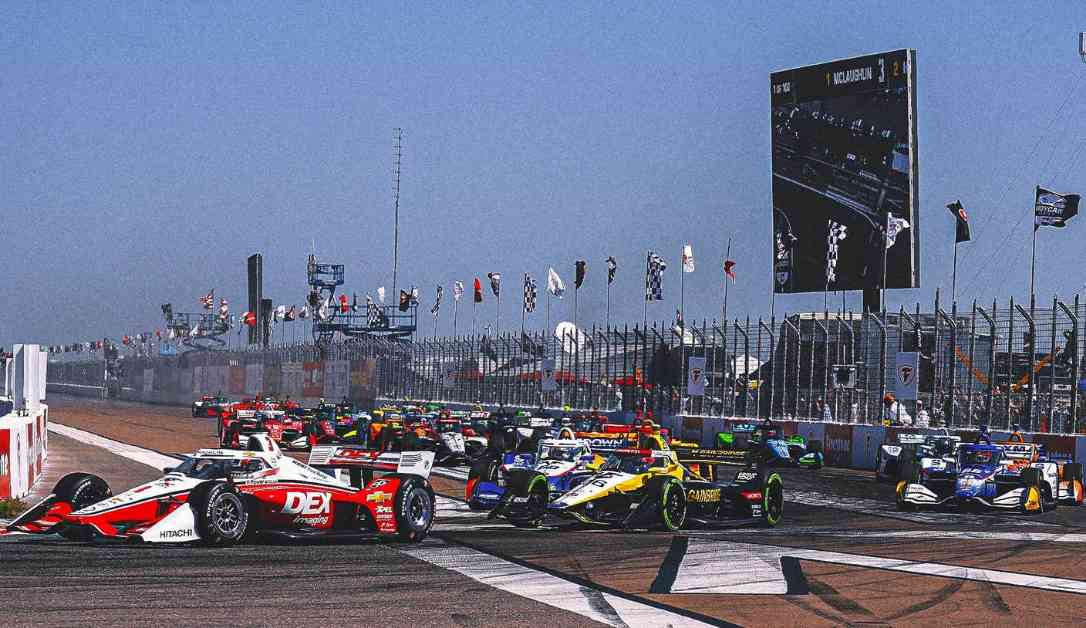Are the INDYCAR drivers just too good this year? The talent level throughout the grid is one of the reasons being cited for the fact that after the opening-lap caution in the season opener at St. Petersburg, the series has gone without a caution in its first three events. To go one race without a caution is unusual. Two races is quite rare, and nearly three full events is unbelievable. So, will there be a caution Sunday at Barber Motorsports Park (1:30 p.m. ET on FOX)? “Lord, I hope so,” said veteran driver Alexander Rossi. “For all of us.” The good news for Rossi (and all of us) is that in 14 INDYCAR races at Barber Motorsports Park, there’s never one that has gone caution-free. That being said, the Long Beach race last month was only the second caution-free race there in the last 26 years. So why have there been no cautions? “There’s no cautions in Formula 1 and everyone says that they’re the best,” quipped driver Conor Daly. “So we’re competing with them.” The facts don’t lie that drivers aren’t wrecking as much in the race. Will Power got into the back of Nolan Siegel on the first lap at St. Pete but beyond that, there hasn’t been contact that has put debris on the track or knocked a driver out of an event. “The reality of the situation is the driving talent is through the roof,” said veteran Graham Rahal. “It’s not what it was 15 years ago — not saying it was bad then, but you had a few that were probably going to cause a yellow. Nowadays, it’s in a different stratosphere of talent level and guys don’t make the same mistakes.” A lot of the young guys that two, three, four years ago were making kind of bonehead moves in the race, they’re not anymore. They’re much more calculated in what they’re doing. But the facts are, too, that there are other factors as well. With the ability to self-start the hybrid engine, when a driver is stalled on the track, the driver can recycle the engine and continue. “In Thermal, when I spun on the out lap [after pitting], the engine was dead and the hybrid restarted,” said Marcus Ericsson. “Without the hybrid, that would have been a caution there. And then cautions breed cautions.” The other primary issue is that with drivers managing tires often with fuel strategy, they aren’t pushing 100 percent of the time. It’s a lot easier not to make a mistake running at 80 percent than it is 100 percent. Alex Palou, who won the opening two races, said the additional weight of the hybrid also makes it difficult to push the car to the maximum because it is actually faster when not hustling the car the entire course. “Maybe everybody is more driving 95 percent instead of 100 percent and therefore less mistakes,” Palou said. “I think it’s more coincidence.” There are plenty of those who agree with Palou, that the first three races shouldn’t be seen as a sign for the remainder of the season. Two of the first three races came on street circuits. “The street courses are going to be what they are, but there are a lot of reasons to be optimistic about road courses going forward,” Rossi said. Felix Rosenqvist, who sits fourth in the standings and wrecked during his test at Barber earlier this year, doesn’t think the trend will continue. “Honestly, I think it’s just a fluke,” Rosenqvist said. “I don’t think there’s any reason why we would go green more than any other time. It’s probably just like a random thing that will end up being caught up pretty quick at some race with six or seven yellows like Detroit last year. “I wouldn’t get used to the fact that we’re having a lot of green laps. I think it’s going to change very soon.” Bob Pockrass covers NASCAR and IndyCar for FOX Sports. He has spent decades covering motorsports, including over 30 Daytona 500s, with stints at ESPN, Sporting News, NASCAR Scene magazine and The (Daytona Beach) News-Journal. Follow him on Twitter @bobpockrass. Get more from NTT INDYCAR SERIES Follow your favorites to get information about games, news and more.
INDYCAR Racing: Impact of Skilled Drivers vs. Hybrid Technology
348












